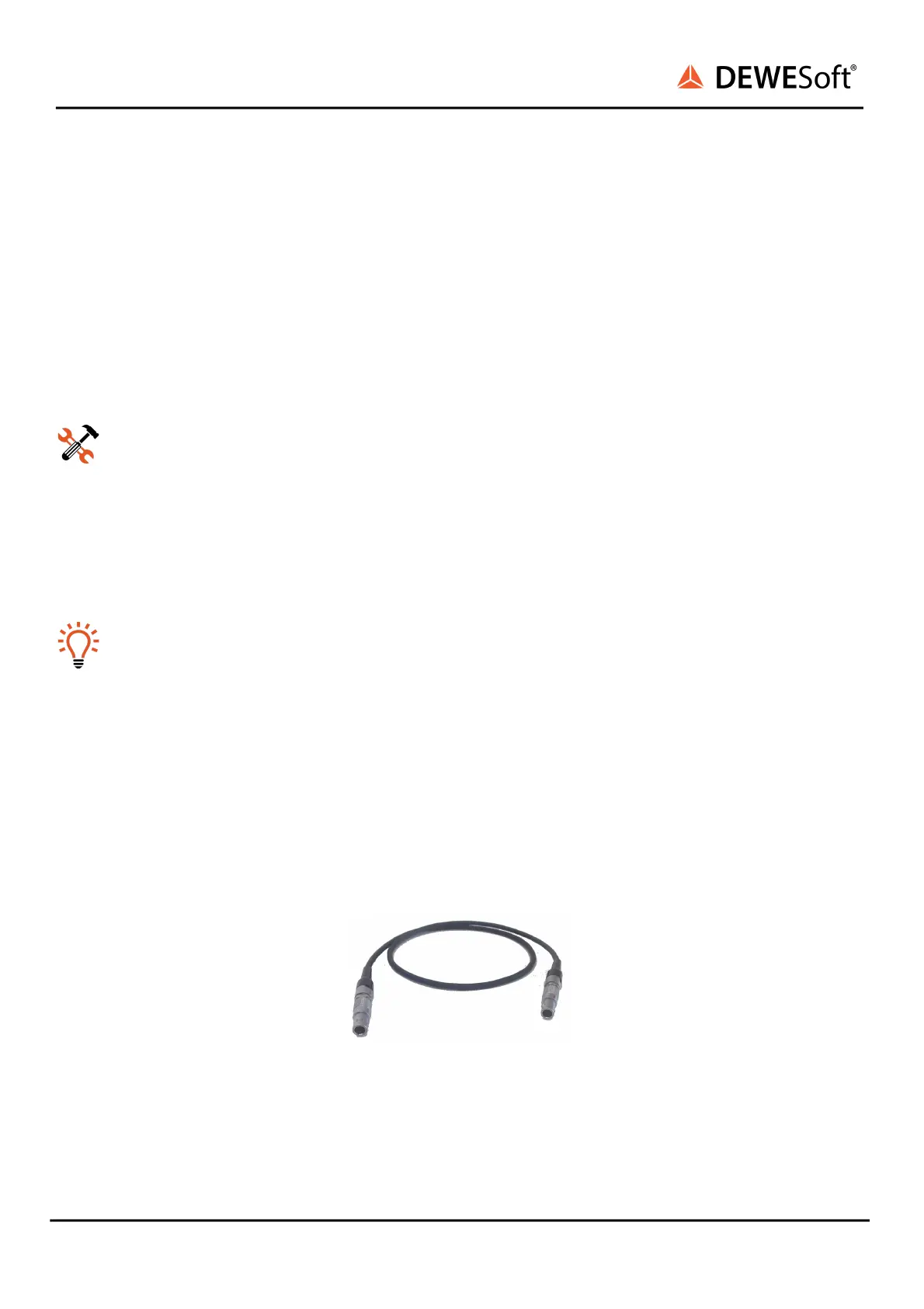SIRIUS
®
TECHNICAL REFERENCE MANUAL
8.2.2. Sync options
When you have several measurement systems, each of those systems has its own internal clock (e.g. 2
SIRIUS® systems). Since no real-world hardware is perfect the 2 clocks will run at slightly different
speeds and thus will drift more and more apart from each other.
8.2.2.1. Hardware synchronisation
The best way to synchronise the clocks of several devices is to use some sort of hardware
synchronisation that transmits a signal that can be used by the devices to synchronise their clocks to
each other.
Example
Depending on your SIRIUS® enclosure version you have these options:
● SIRIUS® USB slices: Connect the slices via sync cables. See: “Connection example - Two
SIRIUS USB/EtherCAT devices - USB”
● SIRIUS® EtherCAT®: slices: You do not need additional cables, because devices are
synchronised by EtherCAT® distributed clock mechanism.
● SIRIUS® Boxed Solution and Rack versions: You do not need additional sync cables,
because the synchronisation is wired internally.
Hint
● You can synchronise SIRIUS® systems to each other or also to other devices (e.g.
DEWE-43, DS-NET)
● Note that the hardware synchronisation function is not related in any way to the setting
of the clockmaster
8.2.2.2. One PC and 2 SIRIUS® USB devices
In this case you must connect your SIRIUS® chassis systems with special synchronisation cables (see
image below “HW-sync cable”). The cables have 4-pin LEMO connectors which fit into the SYNC
connectors on the back side of the SIRIUS® chassis (see chapter ”SINGLE SLICE USB”).
HW-sync cable
These cables can be ordered as options to your SIRIUS® system under the following designations:
SYNC-CBL-05M (0.5m length), SYNC-CBL-3M (3m length)
SIRIUS
®
V20-1 317 / 336
